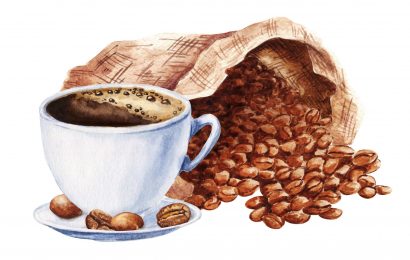Food companies have developed a wide variety of spreads and butter blends to appeal to a range of taste preferences and nutritional needs. Companies are adding healthier unsaturated oils to butter, and non-butter spreads have healthier ingredients such as canola oil, olive oil, flaxseed oil, sea salt, calcium and vitamin D to make them stand out. Spreads and butter also come in forms such as sticks, spreads, squeeze bottles or sprays, and many also come in lower fat varieties.
Fat in butter, margarine and spreads
Full fat butter, margarine and spreads contain 100% of their calories from fat. People with diabetes are advised to limit the type of fat in foods to include less than 10% of calories from saturated fat (those with elevated LDL cholesterol levels may be advised to limit saturated fat to less than 7% of calories) and to avoid trans fat. For an individual on a 1500-calorie meal plan, 10% of the calories from saturated fat would be less than less than 17 grams daily. For the individual limiting saturated fat to less than 7% of total calories, this would be fewer than 12 grams of saturated fat per day.
Butter and spreads are a mixture of different types of fatty acids. Fats high in saturated fat include lard, butter and tropical oils. The more solid a margarine is at room temperature, the more saturated fat it contains. A tablespoon of regular butter has 7 grams of fat, about 30–40% of a day’s worth. To keep saturated fat intake low, try to choose butter and non-butter spreads with less than 2 grams of saturated fat per serving.
Trans fat is found naturally in foods such as butter and in processed vegetable oil spreads that contain partially hydrogenated oil. Spreads that contain hydrogenated and fully hydrogenated oil have no trans fat. A tablespoon of regular butter contains 0.5 grams of naturally occurring trans fat.
The trans fatty acid content of butter and spread products is not always included on the Nutrition Facts panel on product labels. The Food and Drug Administration (FDA) allows food labels to list 0 grams of trans fat if a food has less than 0.5 grams of trans fat per serving. This allows food products to claim they are “trans fat free” even if they contain up to 0.5 grams per serving. For those limiting their trans fat to two grams or less per day, one serving would provide almost one-fourth of a day’s limit.
To get cutting-edge diabetes news, strategies for blood glucose management, nutrition tips, healthy recipes, and more delivered straight to your inbox, sign up for our free newsletter!
Types of butter, margarine and spreads
Butter contains about 110 calories, 12 grams of fat and 30 milligrams of cholesterol per tablespoon. Eight of the 12 grams of fat are saturated fat. Unsalted butter is an alternative for those limiting sodium intake. Regular butter contains about 85 milligrams of sodium per tablespoon, and unsalted butter contains no sodium.
Whipped butter has less saturated fat and fewer calories because it has more air. One tablespoon of whipped butter contains 50–70 calories and 3.5–5 grams of saturated fat. Due to the lower fat content, whipped butter would not be appropriate for cooking, baking or frying.

Butter blended with unsaturated oil (canola, olive, soybean and/or flaxseed) contains less saturated fat than regular butter, which contains around 3.5–4.5 grams of saturated fat and around 100 calories per tablespoon. Some butter-oil blend sticks, such as Land O Lakes Butter with Olive Oil & Sea Salt Sticks, contain generous amounts of saturated fat, about 6 grams per tablespoon.
Light butter or non-butter spreads are lower calorie and fat alternatives to regular full-fat butter or margarine. Butter and spreads labeled “light” contain 50% fewer calories and fat than regular products. One tablespoon of light butter or spread contains 50 calories and 3 grams of saturated fat. Keep in mind when using light butter and margarine products for cooking, baking, and frying that recipe modification may be needed due to their increased water content.
Light butter blended with oils contains added unsaturated oils and water, which decreases the saturated fat to about 2 grams per tablespoon and decreases calories to about 50. Land O Lakes Light Butter with Canola Oil and Smart Balance Light Butter & Canola Oil Blend are light blended butter spreads.
Butter and spreads can contribute large amounts of fat, saturated fat and calories to your diet. To keep saturated fat and trans fat low, choose products with less than 2 grams of saturated fat per tablespoon and do not contain partially hydrogenated oil.
Want to learn more about maintaining healthy cholesterol levels? Read “Natural Ways to Lower Your Cholesterol” and “HDL: Nine Ways to Raise Your Good Cholesterol.”





